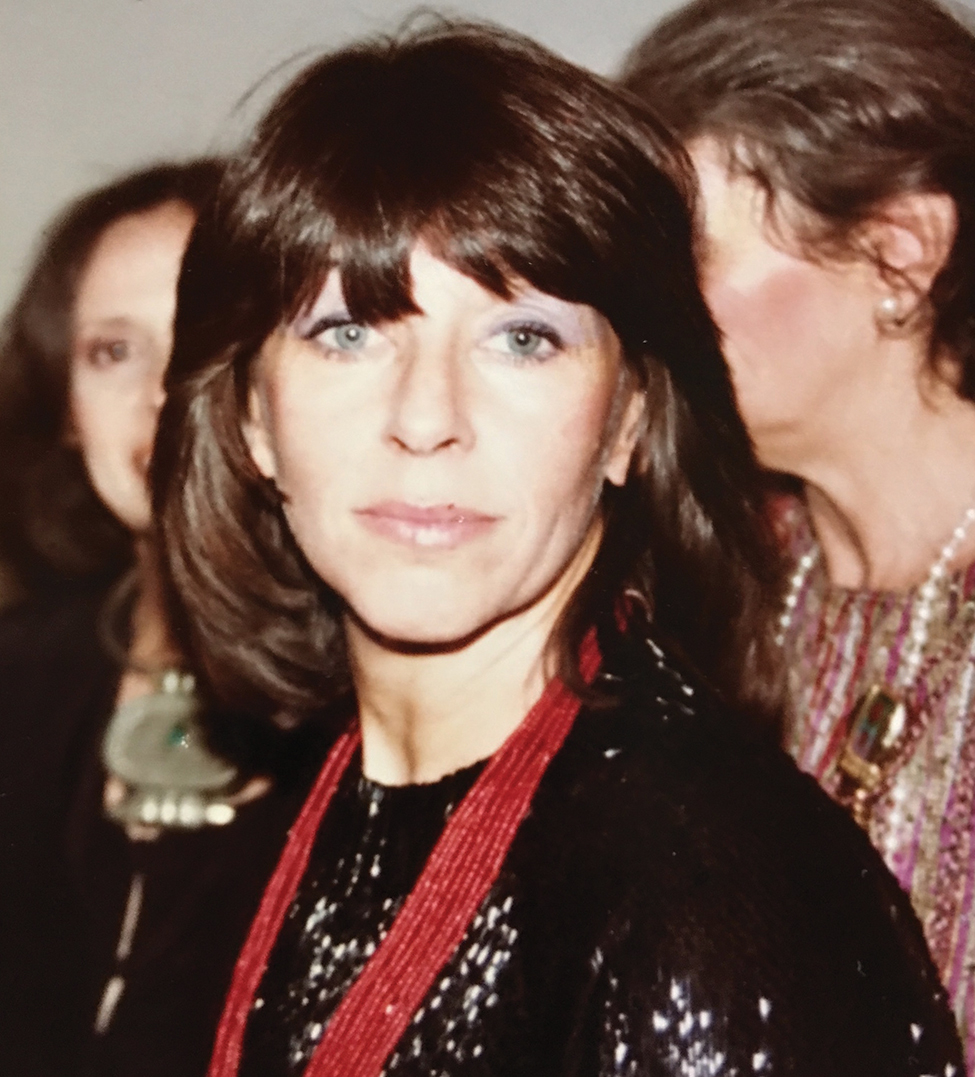Collector Profile: Janis Kanter and Tom McCormick

By KEVIN NANCE
*This profile was published in the May-August 2014 issue of Chicago Gallery News
 If the secret of a happy marriage is compromise, Thomas McCormick and Janis Kanter are one of the happiest couples on Chicago’s art-collecting scene. Despite their significantly differing tastes—he leans toward mid-20th-century abstract painting, mostly by deceased artists; she favors contemporary work by living artists in various media, photography in particular—McCormick and Kanter have blended their interests and, along the way, created one of the city’s most eclectic yet surprisingly harmonious private collections.
If the secret of a happy marriage is compromise, Thomas McCormick and Janis Kanter are one of the happiest couples on Chicago’s art-collecting scene. Despite their significantly differing tastes—he leans toward mid-20th-century abstract painting, mostly by deceased artists; she favors contemporary work by living artists in various media, photography in particular—McCormick and Kanter have blended their interests and, along the way, created one of the city’s most eclectic yet surprisingly harmonious private collections.
Over their 22-year marriage, this Chicago art-world power couple—he owns the Thomas McCormick Gallery in the West Loop, while she chairs the board of directors at the Hyde Park Art Center—have learned how to negotiate with each other on their joint acquisitions. Sometimes it’s a matter of one bending a bit in the other’s direction. Other times it’s a matter of one spouse recognizing that the other’s enthusiasm for a particular work of art is so primal, so unshakable that resistance is futile.
“I would say the decision-making is heavily weighted to one side of the couple,” McCormick says with a smile, pointing his chin in Kanter’s direction during an interview at their sprawling historic home, a 1904 Holabird and Roche mansion in Hyde Park that they bought and refurbished five years ago. “One of the first expensive pieces we bought together was at the Chicago art fair at Navy Pier a while back,” McCormick recalls. “I step out into the corridor and here comes Janis walking towards me. She’s got that look, and I know I’m in trouble.”
His wife doesn’t deny it. “If I don’t like it,” she says with a twinkle in her eye, “it doesn’t get very far.”
“Or it goes in my man-cave upstairs,” he offers. “That’s all me, straight down the line. She walks by there on tiptoe.”
“On occasion I walk in and go, ‘I could really do something in here,’” she says. “And then I think, ‘I need to be out of here.’”
In all seriousness, McCormick’s willingness to accede to his wife’s judgment has grown over the years, in part because his experience has taught him that her more experimental tastes and instincts (“I definitely like things that are weirder,” she says) are more on target than might be initially apparent. “I’m a little bull-headed,” he admits. “But Janis helps me see things that I would turn a blind eye to otherwise. I would be much more inward-looking, much more of an old fart about all this stuff if I weren’t married to her. More often than not, what happens is that we’ll get something that I’m not crazy about, and then six months or a year later, I really love it. It grows on me.”
One of the earliest examples of this was the piece Kanter fell in love with at Navy Pier all those years ago: a photo-collage by the Scottish artist David Mach of a Chicago River scene, which now hangs in their entrance hall with a small collection of Asian ceramics beneath a chandelier of Murano glass. McCormick’s initial hesitation about the Mach piece was that it was so large, and as his wife says, “Wall space is at a premium in this house.”
That’s true despite the fact that the house is a rangy 8,000 square feet. “Some people with eclectic collections display them salon-style, but Tom and Janis don’t do that,” says Kate Lorenz, executive director at the Hyde Park Art Center and a longtime friend of the couple. “They hang things with space around them, so everything kind of breathes.”
___
Husband and wife came by their respective collecting knowledge and practices via distinctly different routes. McCormick, who studied printmaking at the University of Kansas, is a largely self-taught collector who began acquiring (and sometimes reselling) antiques, especially furniture, oriental rugs, paintings, prints, textiles and ceramics, as an undergraduate. “If it’s not nailed down, I’ve probably bought and sold it,” he says. “I never did cars, but you never know.” By 1992, when McCormick moved from Kansas City to Chicago and married Kanter, he had narrowed his business model to dealing in paintings, but continued to collect most of the other genres he had loved as a teenager.
She, on the other hand, had grown up surrounded by art as one of three children in a collecting family. Her parents, Chicago tax attorney Burton Kanter and his wife Naomi, began with little money (“They used to frame pieces of wallpaper,” their daughter recalls fondly) but, as their fortunes improved, collected work by local artists and, eventually, blue-chip pieces by some of the biggest names in the international art world. Eventually the senior Kanters amassed a collection of about 1,200 artworks.
But Burton Kanter in particular never lost interest in contemporary and local artists, often developing relationships with them that proved mutually beneficial. “He was a patron,” his daughter says. “Artists would come to my dad and say, ‘Hey, Burt, I really want to do this body of work for the next year. Is there a chance that you could support me for this amount of money, and you’ll get the first six pieces of your choice?”
After their father’s death in 2001 at the age of 71, Kanter and her two brothers inherited the family collection, which they have since culled down to about 500 pieces. About a third of the McCormick-Kanter collection, displayed in their homes in Hyde Park and Sawyer, Mich.,
is from the Kanter family legacy, and includes pieces by Jackson Pollock, Franz Kline, Hans Hofmann and Andy Warhol, including ten works from Warhol’s “Myths” series.
Another third features works by artists represented by the McCormick Gallery, including mid-century abstract expressionists such as the 92-year-old New York painter Mary Abbott, as well as Chicago artists such as Dawoud Bey, Roger Brown, Tony Fitzpatrick, Richard Hunt, Judy Ledgerwood, Laura Letinsky, Wesley Kimler and others.
The final third includes works jointly acquired by McCormick and Kanter, with the latter’s taste—her special emphasis on large-scale photography, including a series of commissioned portraits of their daughters, Tatum and Reese—a bit more apparent. Several of these works were acquired at art fairs or through the Hyde Park Art Center, often as a result of Kanter’s passionate and sometimes rather sudden attachments to them. “She tends to be pretty sure about things very quickly,” Lorenz says. “Just the other day, a show was going up in one of our galleries and she was breezing through. By the time she got to the end of the hall, she had essentially bought something. We hadn’t even put the price list down, but something shook her, and she was ready to add it to her collection.”
McCormick is a more deliberative buyer and more attentive to the price of an artwork than his wife. But he is not without his own all but uncontrollable enthusiasms, including a passion for elegant Mexican serapes (McCormick has 40 of them in his man-cave, displayed on a rack system with hand-cranked dowels that he designed himself) and various artworks featuring dragons.
“I’m a dragon guy,” he says helplessly, then recounts what happened one year at the Armory Show in New York, when he spotted a ceramic sculpture featuring the mythical creatures by the mid-career Chinese artist Li Lihong. McCormick had lusted after the piece since seeing it on the cover of Art + Auction magazine two weeks earlier; now, beholding it in the gleaming porcelain flesh, he could barely contain himself.
Within minutes he was on the phone to his wife, who calmly told him: “Tom, just get it.”
___
It’s difficult to quantify the McCormick-Kanter collection, which consists of a core group of about 150 paintings, prints and photographs divided between their two homes, plus hundreds of other objects, including collections of textiles, antique oriental rugs, Italian art glass, Asian (especially Japanese and Chinese) ceramics, salt-and-pepper shakers, Mexican and Arts & Crafts pottery, art furniture and a wide variety of sculpture. The remarkable thing about the works on display in Hyde Park is that despite the fact that they are arrayed in fairly close proximity and often grouped together in juxtaposed fashion, they cohere far more than they clash.
“Janis has an eye for design, and the house itself is such a platform,” Lorenz says. “It’s an amazing house that they’ve refreshed and put a new palette on, and it holds art wonderfully. When you walk in and see an Andy Warhol next to a young photographer next to a ceramic pot, it all makes sense, because it’s all held together by the house.”
It’s held together, too, by a couple who have assembled their collection the way they’ve nurtured their marriage: by knowing when to bend and blend, when to stand firm, and when to tell each other to just get it.
*Publisher's update to the print edition: Artworks from the Kanter family collection are owned by Art Enterprises, Ltd.
Kevin Nance is a Chicago-based freelance writer and photographer. Twitter @KevinNance1






